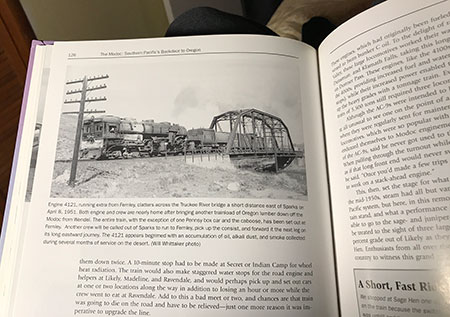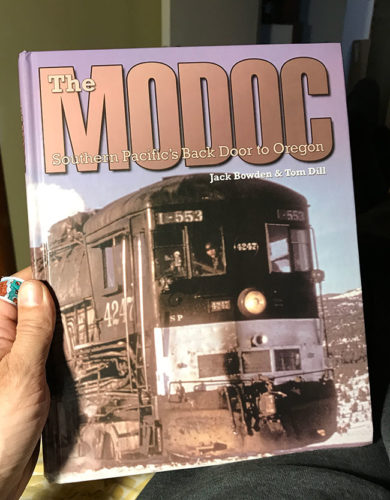 A few years back my brother and I went on a cross-country trip through north-western Nevada exploring ghost towns. One of the towns we visited was a place called Wadsworth. Although not strictly a ghost town, Google maps showed that a railway line once went through it and just outside town the map showed the remains of a railroad bridge. We went down there, took photos of the bridge and went on our way. I never forgot that bridge and often wondered which railroad built it and what happened to the line.
A few years back my brother and I went on a cross-country trip through north-western Nevada exploring ghost towns. One of the towns we visited was a place called Wadsworth. Although not strictly a ghost town, Google maps showed that a railway line once went through it and just outside town the map showed the remains of a railroad bridge. We went down there, took photos of the bridge and went on our way. I never forgot that bridge and often wondered which railroad built it and what happened to the line.
Well I recently read Jack Bowden and Tom Dill’s book on a railway line that ran from Nevada to Oregon and there on page 126 was my bridge! The railway line that ran across the bridge was called the ‘The Modoc Line’ – part of a series of railroads that the Southern Pacific Railroad built and/or purchased in order to create a ‘back door’ route to Oregon to tap the lumber trade.

I first came across The Modoc Line last year when reading another book about Oregon railroads. As I already knew, the Southern Pacific had two routes south to California – the Siskiyou and the Cascade mainline. But in order to move lumber freight more quickly to eastern markets it decided to build this lonely mainline through the deserts of northern California and Nevada. This line was previously unknown to me and I was quickly on the hunt for any information about it. Eventually I found this book.
It’s a really enjoyable read. It goes into the histories of the three predecessor lines, the subsequent development by the Southern Pacific, the hard times, the good times and then the sad decline and eventual closure.
What caught my eye:
- The town of Westwood and its electric logging railroad. Anything electric interests me so I went and bought book on the subject – Red River: Paul Bunyan’s Own Lumber company and its Railroad.
- The branch line to Lakeview. Part of the original narrow gauge which then was converted to standard gauge. There is something very enchanting about a lonely branch line winding its way through the desert.
- Cab-forwards – the book is full of dramatic images of cab-forwards pushing and pulling trains up and down the rollercoaster gradients of the line. The unique cab-forwards of the Southern Pacific are a subject I want to explore further at some point.
- Railroading stories of those who worked the line. I wasn’t aware of how hard life could be working on the railroad especially in the baking heat of summer and the bitter cold of winter.
- There is a section of color photographs in the rear that really brings the line to life. I’d like to find more color photography of the line especially in its later years.
It was a most enjoyable read and well illustrated with maps, diagrams, and photographs. It was great to finally put a railroad to a bridge and fill in my little mystery. My brother will be back later this year and I’m now planning a two day trip with him to visit the remains of the line.
